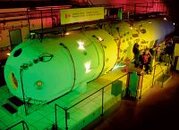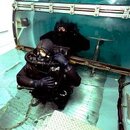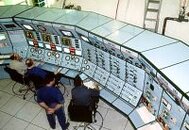- Messages
- 254
- Reaction score
- 64
- # of dives
- I'm a Fish!
Rhone,
O2 Tox is a function of pressure and duration. You can handle a high pressure for a short duration, or a low pressure for a long duration. But if you choose a high partial pressure for a long duration, then you risk the possibility of toxing out.
Conventional modern standards are relatively conservative as modern science does not fully understand all the factors, or how they might work together. Overall fitness, conditioning, CO2, and environmental factors all play roles that can make one very susceptible to toxing one day, and very resistant the next. If you stay within modern standards, you should be okay?
Almost 30 years ago I was required to take an O2 tolerance test for commercial dive school. This was a standard test for commercial and military divers. 2 ATA for 30 minutes in a chamber setting. I passed, but a lot of guys did not, and if you toxed you were kicked out. Eventually, they realized that the test was worthless, as it proved nothing because of all the variables, and that the standards were too aggressive. There is no O2 tolerance test currently used.
Bottom line is that if you push the modern limits, you could get caught short, and very few guys tox in the water and live to tell about it.
Cheers
JC
O2 Tox is a function of pressure and duration. You can handle a high pressure for a short duration, or a low pressure for a long duration. But if you choose a high partial pressure for a long duration, then you risk the possibility of toxing out.
Conventional modern standards are relatively conservative as modern science does not fully understand all the factors, or how they might work together. Overall fitness, conditioning, CO2, and environmental factors all play roles that can make one very susceptible to toxing one day, and very resistant the next. If you stay within modern standards, you should be okay?
Almost 30 years ago I was required to take an O2 tolerance test for commercial dive school. This was a standard test for commercial and military divers. 2 ATA for 30 minutes in a chamber setting. I passed, but a lot of guys did not, and if you toxed you were kicked out. Eventually, they realized that the test was worthless, as it proved nothing because of all the variables, and that the standards were too aggressive. There is no O2 tolerance test currently used.
Bottom line is that if you push the modern limits, you could get caught short, and very few guys tox in the water and live to tell about it.
Cheers
JC
Bret, not sure if you are monitoring this thread, but if you are, I would actually be more interested to hear your thoughts on O2 tox risk (rather than narcosis risk, which most people have fixated on). What sort of planning/strategy did you use to manage the risk?
Might take you up on that - do you ship internationally?








